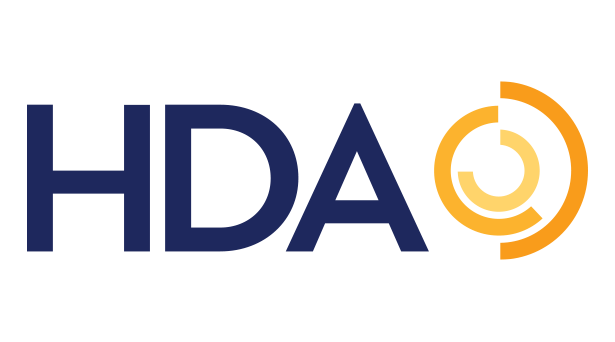How 2023 Will Shape the Future of Healthcare Supply Chain Resilience
As Congress works to reauthorize the Pandemic and All-Hazards Preparedness Act (PAHPA), 2023 will mark a cornerstone in advancing solutions to enhance the public health infrastructure. Many of the key lessons from the COVID-19 response — which ultimately allowed the healthcare supply chain to remain nimble — are centered around data and information sharing.
HDA and our distributor members believe data illumination plays an essential role in bolstering supply chain resilience. However, increasing data sharing between the public and private sectors must be done carefully.
Recently, HDA surveyed our distributor members and other subject matter experts to gain insights into current data and information sharing within the healthcare sector, and these findings have been distilled in our latest report, Healthcare Supply Chain Resilience and Data Illumination. This report documents the role of public-private partnerships in the COVID-19 response, while outlining some challenges and actionable recommendations to maintain long-standing data-sharing agreements.
Aligning on a Framework for Healthcare Supply Chain Resilience
A crucial first step in bolstering the integrity of the healthcare supply chain is establishing a consensus definition for resilience. Based on our findings, HDA defines supply chain resilience as the ability to manage disruptions and shocks without significant interruption to patient care and healthcare delivery.
Going deeper, HDA’s conversations identified three core elements of healthcare supply chain resilience:
- Agility: A measurement of the supply chain’s ability to quickly react to, limit the scale of and prevent product shortages during disruptions.
- Robustness: The ability of the supply chain to manage surge capacity by preparing for and mitigating disruptions before they occur, when possible.
- Visibility: The ability of supply chain stakeholders to monitor threats, to make data-driven decisions and recover from disruptions.
While establishing consensus on the definition of healthcare supply chain resilience is a foundational step, challenges remain in resolving concerns about data transparency between the public and private sectors in any coordinated response effort. Resolving this challenge will require establishing a flexible data-sharing framework that works effectively to maintain coordination in steady-state, as well as during events.
Enhancing Data-Sharing Between Industry and Government
Developing proactive and comprehensive plans for data collection and sharing between public and private sector stakeholders are essential to building a more resilient healthcare supply chain.
Throughout the coordinated COVID-19 response, the Administration for Strategic Preparedness and Response (ASPR) secured voluntary, ad hoc agreements with private-sector organizations around supply chain visibility and operating status. These agreements fed into the Supply Chain Control Tower, a decision-making tool which used data from manufacturers and distributors to create supply chain visibility, provide insights for demand forecasting and inform responses to product shortages. While this framework was effective during the immediate pandemic response, a structured long-term plan is needed to maintain this capacity and alleviate burden.
In the report, HDA advances a set of key recommendations to achieve data illumination to support supply chain resilience, including the need to:
- Establish communication touchpoints that are structured and consistent, to ensure the availability of accurate, complete, realizable, relevant and timely data to illuminate trends for resilience;
- Increase specificity of data requests with specific goals to determine the exact needs from private sector partners;
- Establish a better understanding of the types of data valuable to the federal government and an approach to sharing meaningful data that is minimally burdensome to collect and analyze;
- Improve technology solutions, such as increased automation, streamlined processes, secure databases and staffing resources; and,
- Create more collaboration opportunities across different sectors to form communication channels.
Building on Our Foundation for Public Health Preparedness
The renewed focus on data transparency, data illumination and supply chain resilience comes at a critical juncture as the PAHPA reauthorization process proceeds. (The law was originally passed in 2006 and subsequently reauthorized in 2013 and 2019). PAHPA — which is must-pass legislation for 2023 — clarifies roles and responsibilities during natural disasters and other public health emergencies and establishes a stronger infrastructure for coordinating response efforts.
The reauthorization of PAHPA this year is a unique opportunity to better prepare the nation for public health emergencies while building a more resilient supply chain. HDA and our members stand ready to assist and contribute our expertise during the PAHPA reauthorization process, providing several recommendations around enhanced coordination and data illumination. These suggestions build on the findings in the Healthcare Supply Chain Resilience and Data Illumination report, offering additional opportunities for public and private sector coordination:
- Encouraging the ASPR to convene members of the federal government and the private sector to review pandemic-related reports collectively;
- Conducting a Government Accountability Office study on federal agency data that can be leveraged for visibility into the healthcare supply chain that provides an early warning of potential disruptions; and,
- Incorporating lessons related to data and information sharing from the COVID-19 pandemic to determine which capabilities of the Supply Chain Control Tower to maintain.
Ensuring the country is ready to respond to public health threats will require the public and private sectors to work seamlessly together, and fostering greater communication, collaboration and coordination is key to that effort.
To read the full report about the role data transparency and illumination play in bolstering the integrity and resilience of the healthcare supply chain, click here.